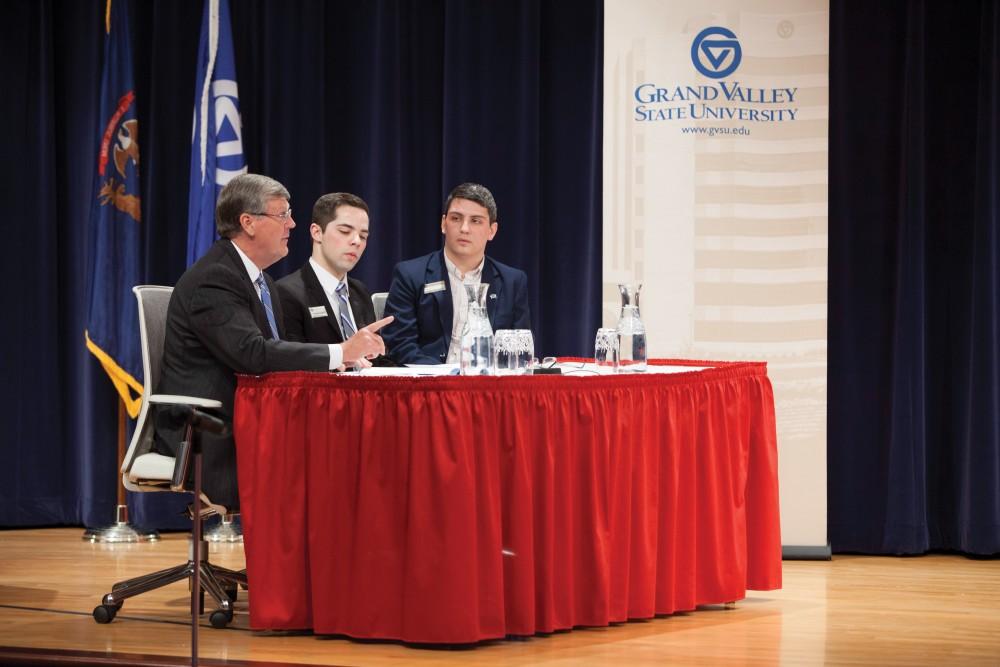Michigan senators hold hearing on costs of higher education

GVL/Courtesy – Bernadine Carey-Tucker
Mar 9, 2014
As the cost of college rises, many young adults are questioning whether the benefits of attending four plus years of school truly outweigh their growing debt. According to a recent study conducted by the Pew Research Center, the answer is yes: college is worth it.
The center measured that the annual income of 25- to 32-year-olds with a bachelor’s degree is 50 percent greater than that of millennials with less than a four-year degree.
The premise of this study was put to question Feb. 27 at a hearing to discuss Gov. Rick Snyder’s budget for higher education. A proposal to cap tuition increases at 2.6 percent rather than 3.2 percent was the topic of debate.
Presidents from Grand Valley State University, Ferris State University, Michigan Technological University and the University of Michigan Flint shared their views with State Senators Tonya Schuitmaker and Howard Walker, respectively the chair and vice chair of the Senate Appropriations Subcommittee on Higher Education. The subcommittee hosted the hearing at GVSU’s Pew Campus.
The presidents discussed the factors that go into determining tuition costs, but none gave a “yes” or “no” answer to the proposal to cap tuition increases at 2.6 percent.
In his address to the committee, GVSU President Thomas Haas encouraged the state’s move to invest in education.
“An investment in higher education is the right strategy for Michigan,” Haas said. “And these actions will bring to an end two decades of balancing the state budget on the backs of college students and their families.”
Snyder’s proposal distributes about 2 percent of state funds to Michigan schools through the use of performance measures.
“Among these measures are retention and graduation rates; strong programs in high demand: STEM fields, science, technology, engineering, and math; and the number of Pell Grant eligible students,” said Matthew McLogan, vice president for University Relations at GVSU. “Grand Valley excels in theses criteria and consequently did well in the recommendation which is now pending before the legislature.”
Despite the state’s movement, funds are still not being allocated in a way that reflects GVSU’s performance, said Andrew Plague, vice president of the Political Affairs Committee on GVSU’s Student Senate.
McLogan agreed, adding that the state used to pay 75 percent of the cost of running the university. Today, he said, state funding covers about 15 percent of GVSU’s operating costs.
Plague addressed this issue in his speech at the hearing.
“While annual increases in recent years have been determined based on specific metrics, under which Grand Valley has done well, the original base amounts appropriated to each university seem arbitrary (and are) based on decisions made long ago that have since been forgotten,” Plague said.






















